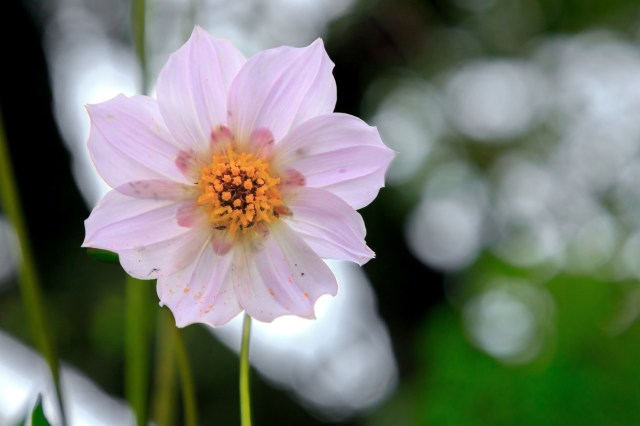
Five things to do in the garden this week:
1. For an attractive indoor or patio plant, grow a date palm from seed. The seedling that sprouts will grow slowly and will require increasing doses of sunlight as it develops. After eating a date, you can usually sprout its seed easily enough. Seeds from fresh dates are easier to sprout than those from dried ones, but both types are likely to germinate. Soak the seeds in water for 72 hours, changing the water once a day. Then dunk some peat moss in water to the point of saturation, mingle your date seeds within its fibers, and place moss and seeds inside a sealed plastic bag at room temperature. Within two to four weeks, most of the seeds will have sprouted, at which point they can be removed from the bag and planted in regular potting soil. Simply soaking the seeds in water prior to planting, without the peat most and plastic bag treatment, will also lead to positive results, except that germination will be slower.
2. Plant a tree dahlia (Dahlia imperialis), which is the sunflower’s botanical kin since both belong to the daisy family. A can grow up to 12 feet tall or more, eclipsing the height of all but the tallest sunflowers. Tree dahlias are perennials that are cut back to ground level on an annual basis. This means that a plant may put on as much as 12 feet of growth in a single season. You can find both a lavender-pink and a double white variety at Annie’s Annuals and Perennials ()
3. We generally think of snapdragons as annuals but in their Mediterranean habitat they grow as perennials. You can keep your alive for several years by allowing the flower stalks to remain after they finish blooming. Just cut them down to where a set of leaves is growing and they will re-bloom again when the heat of summer has passed. Although semi-dwarf or dwarf snapdragons are what you usually find at the nursery, seeds of snapdragons that grow two feet tall are widely available through Internet vendors. In addition to the grand statement they make in the garden, they are also excellent as cut flowers.
4. Prevent corn earworms by depositing a little mineral oil in the silks five days after silks appear and begin to turn brown. It is essential to wait five days after silks’ emergence in order to allow pollination to occur. However, if you wait much longer, the eggs laid by the earworm moth will already be turning into worms (caterpillar larvae). For each ear, fill an eyedropper half full with the oil and insert it 1/4 inch into the mass of silks before depositing it, whereupon it drips down into the husk and smothers any larvae that may have hatched.
5. Juliet de Souza, who gardens in Canoga Park, sent me a photo of her blue hibiscus (Alyogyne huegelii). This ornamental from southwestern Australia is truly an unforgettable plant in full bloom. Picture large, silky, pinwheel-shaped, purplish-blue blooms completely covering lacy leafed, if somewhat wooly, foliage. Plant it in full sun for the most complete flower display. It disdains overwatering so give it no more than a single weekly soaking.
Your questions, comments, gardening problems and tips are always welcome. Email [email protected].

